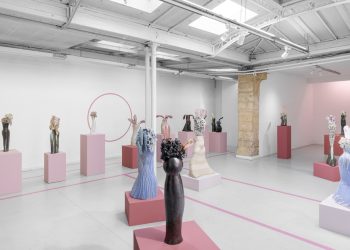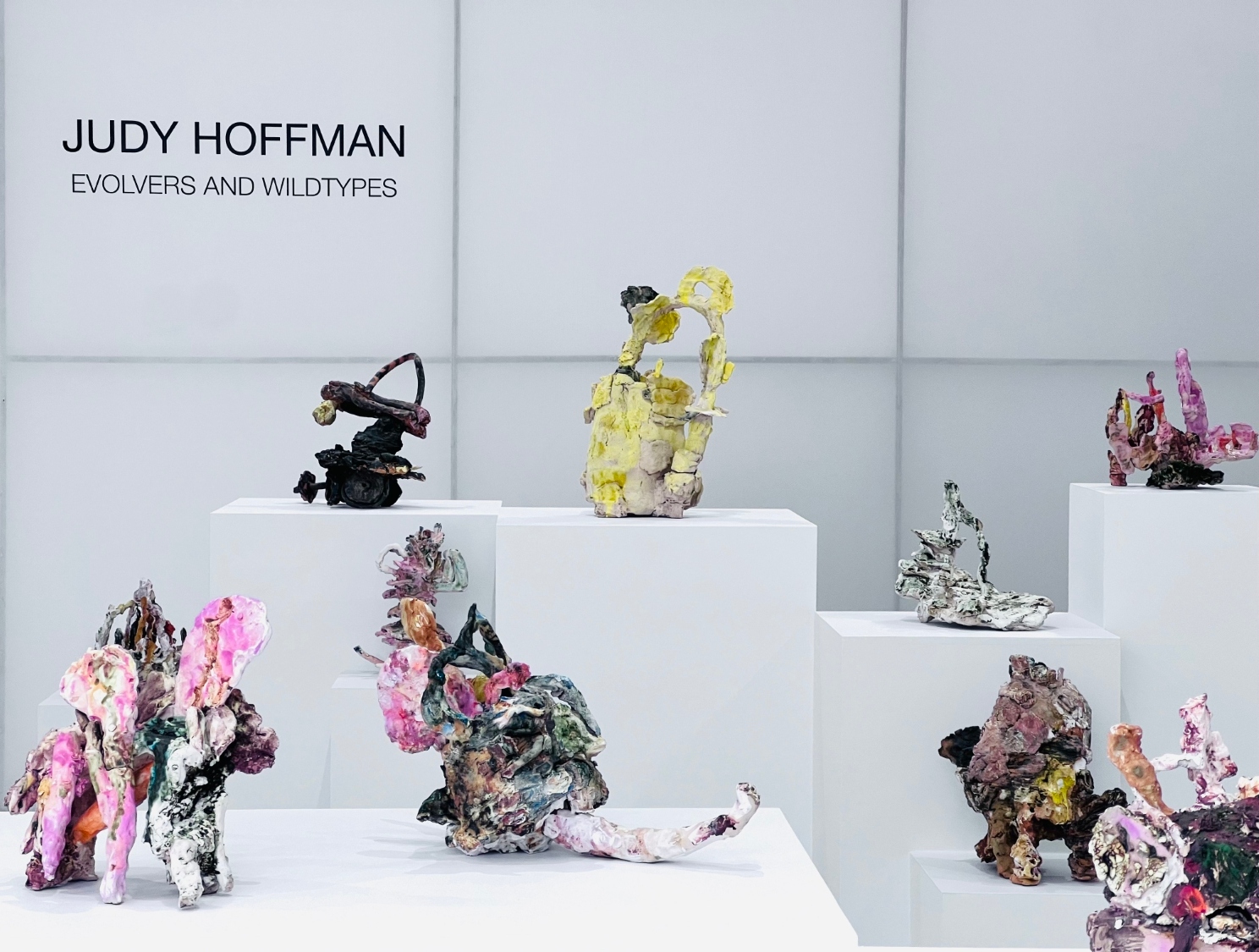
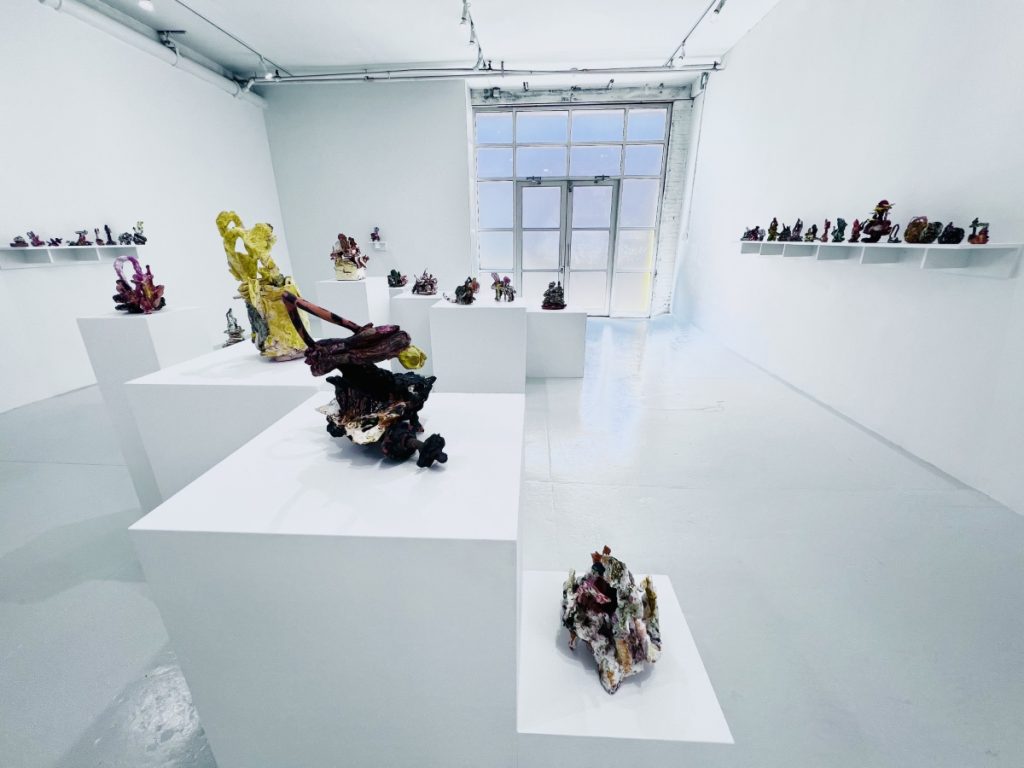
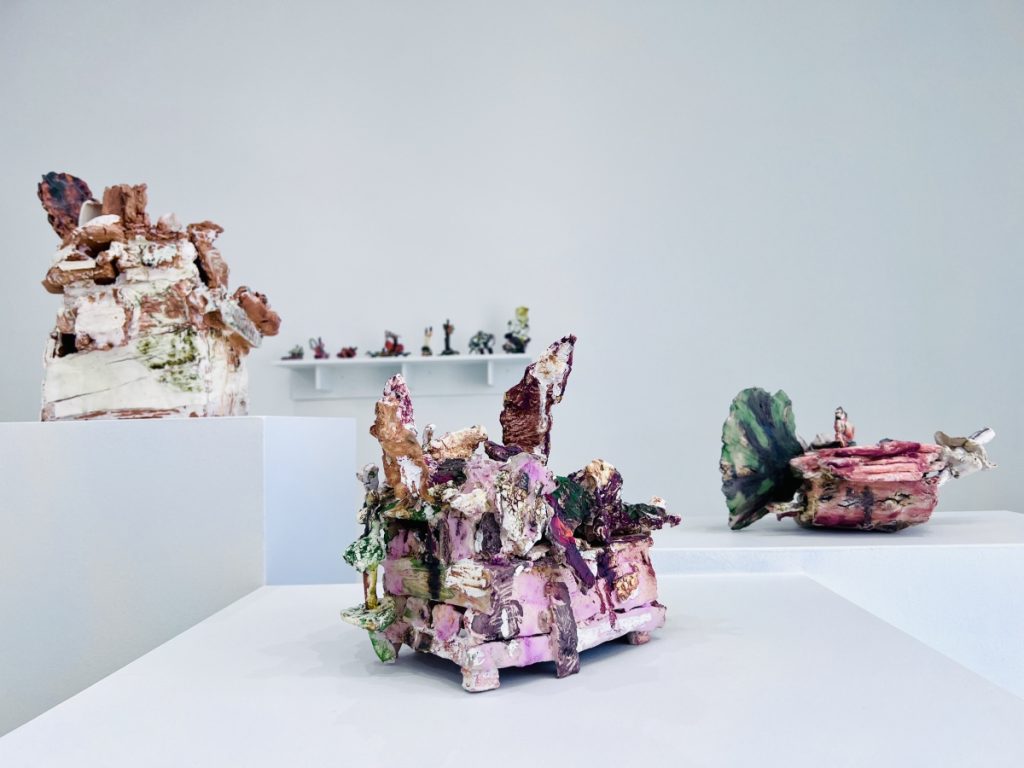
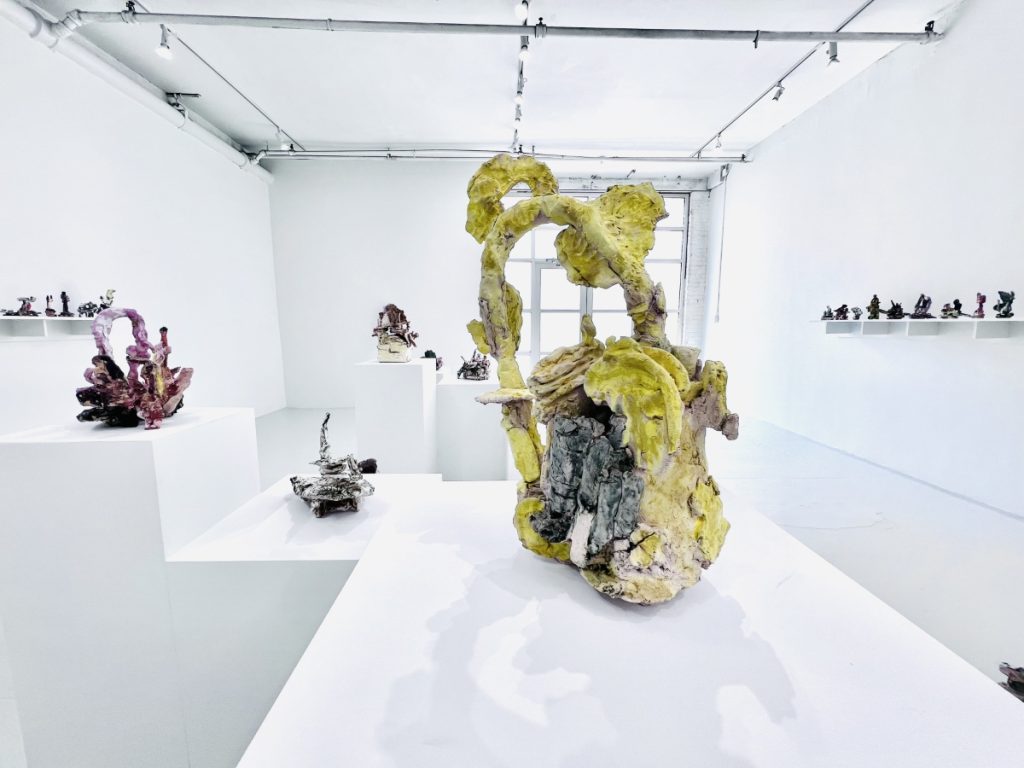
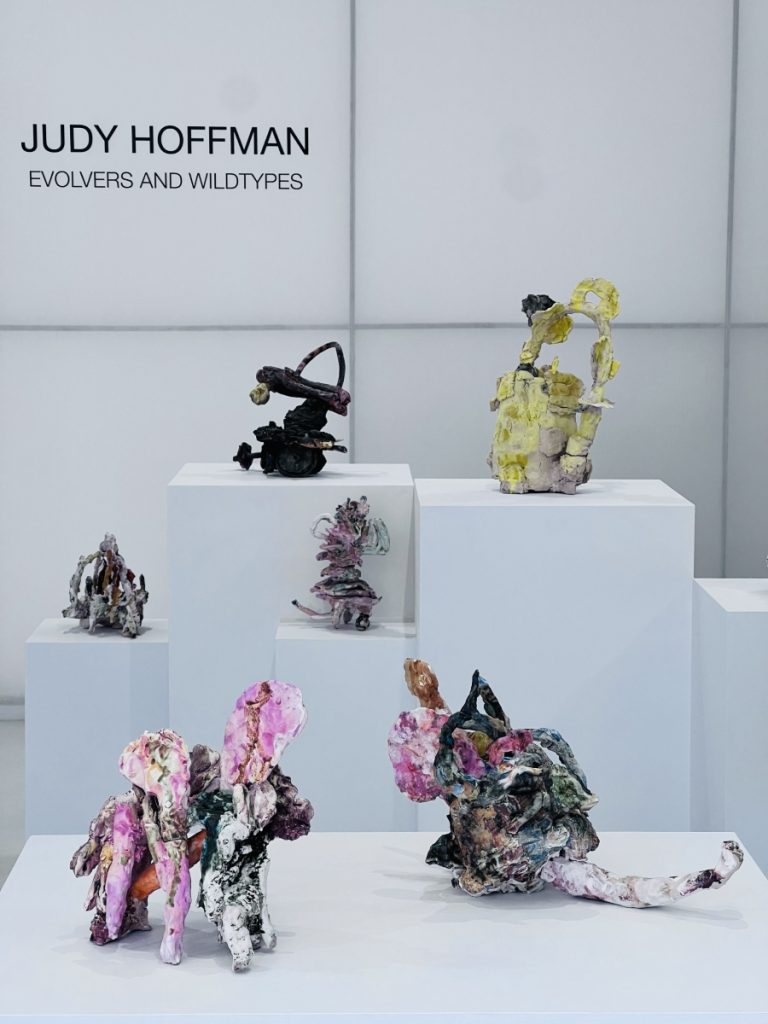
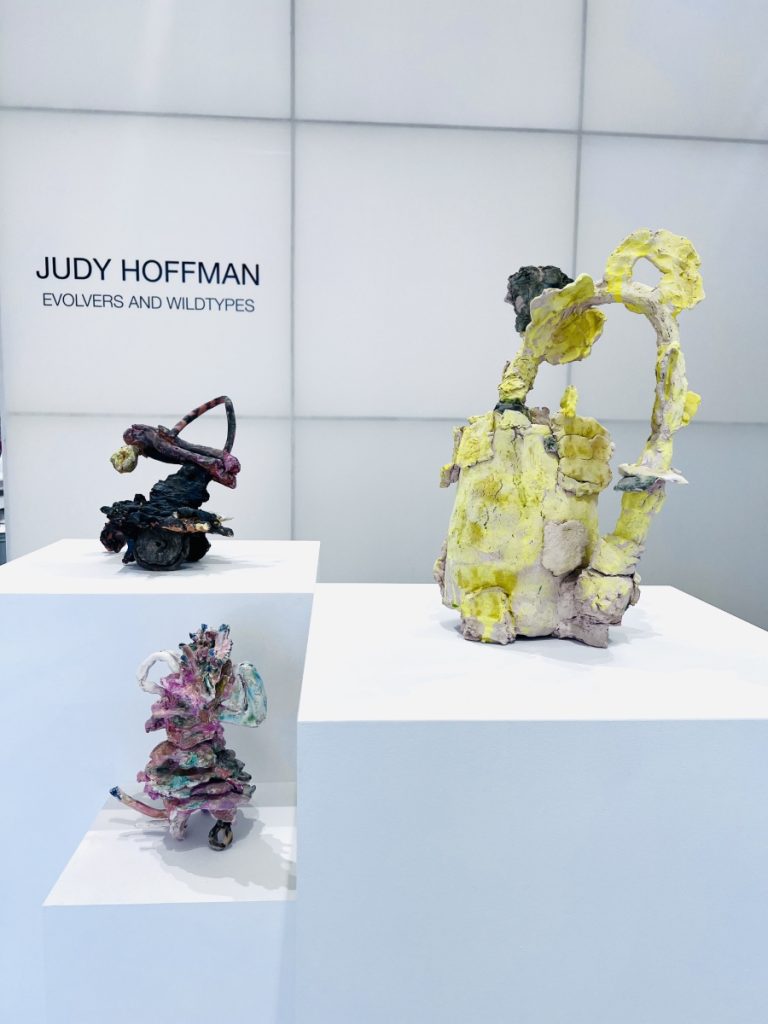
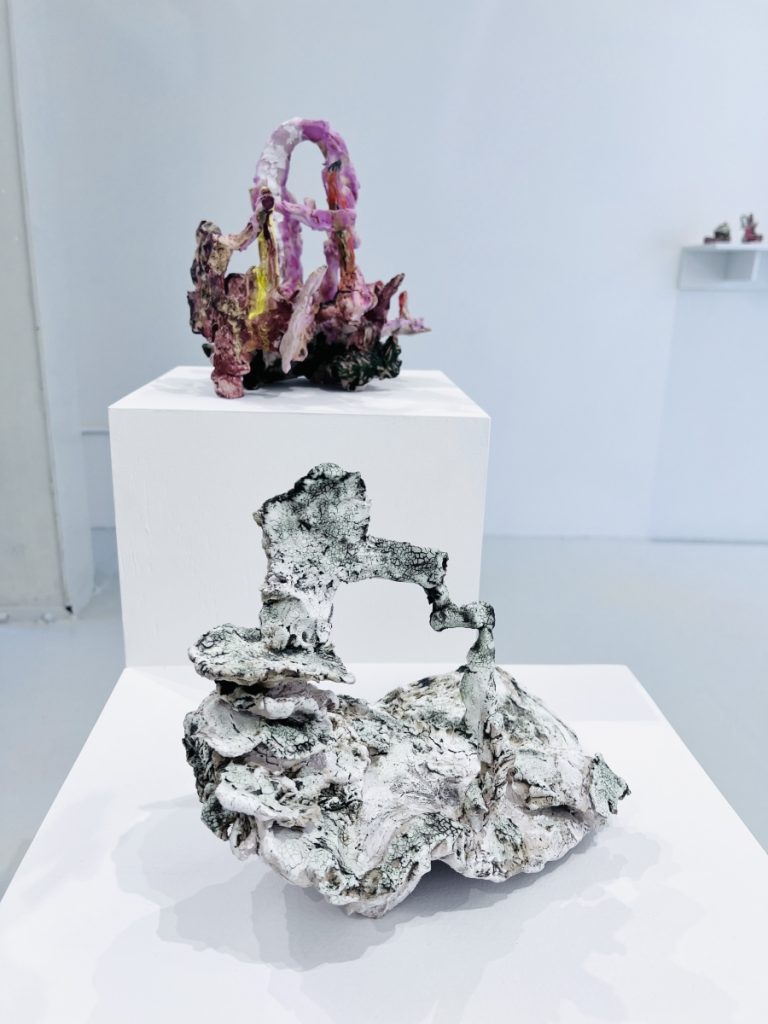
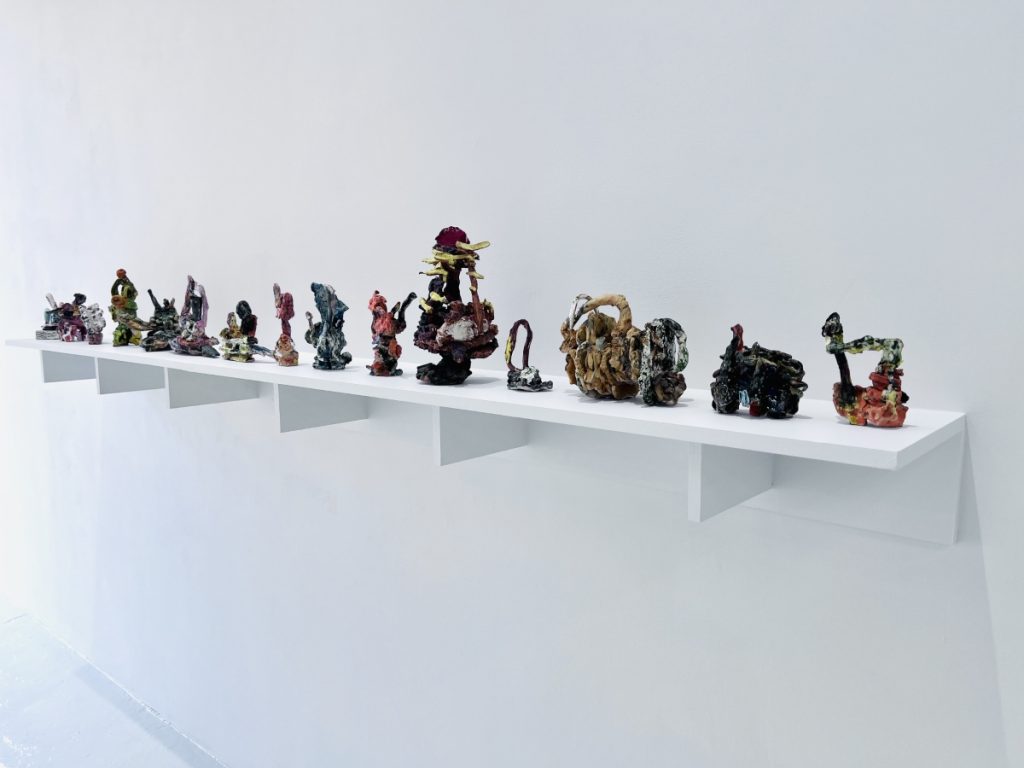
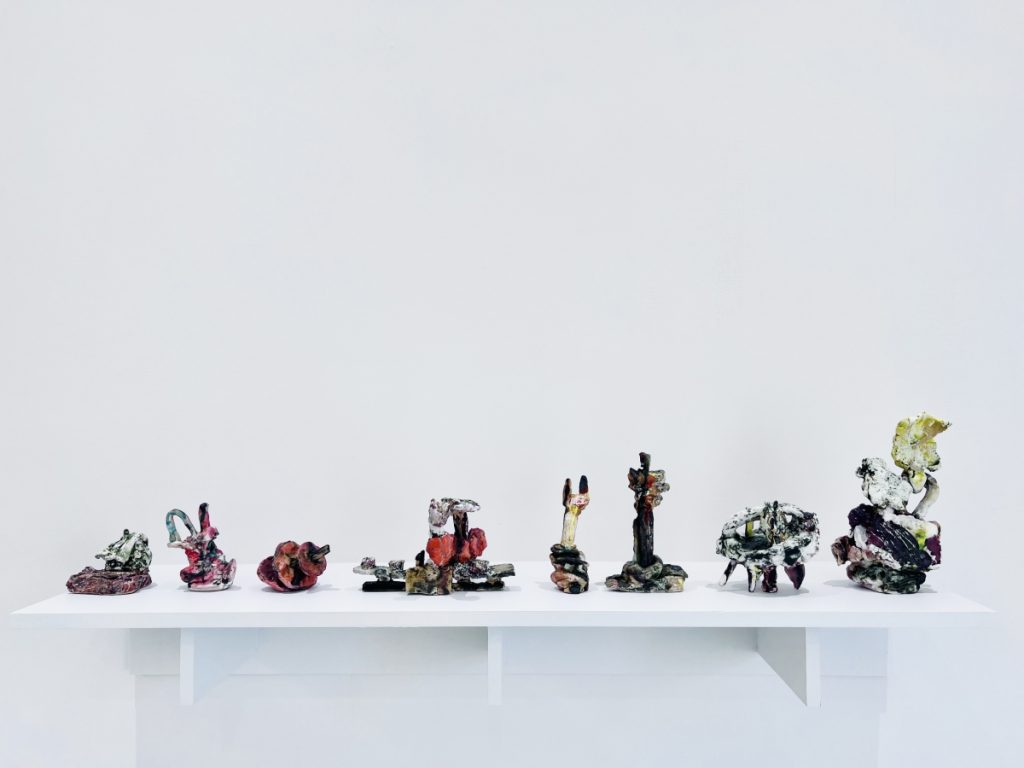
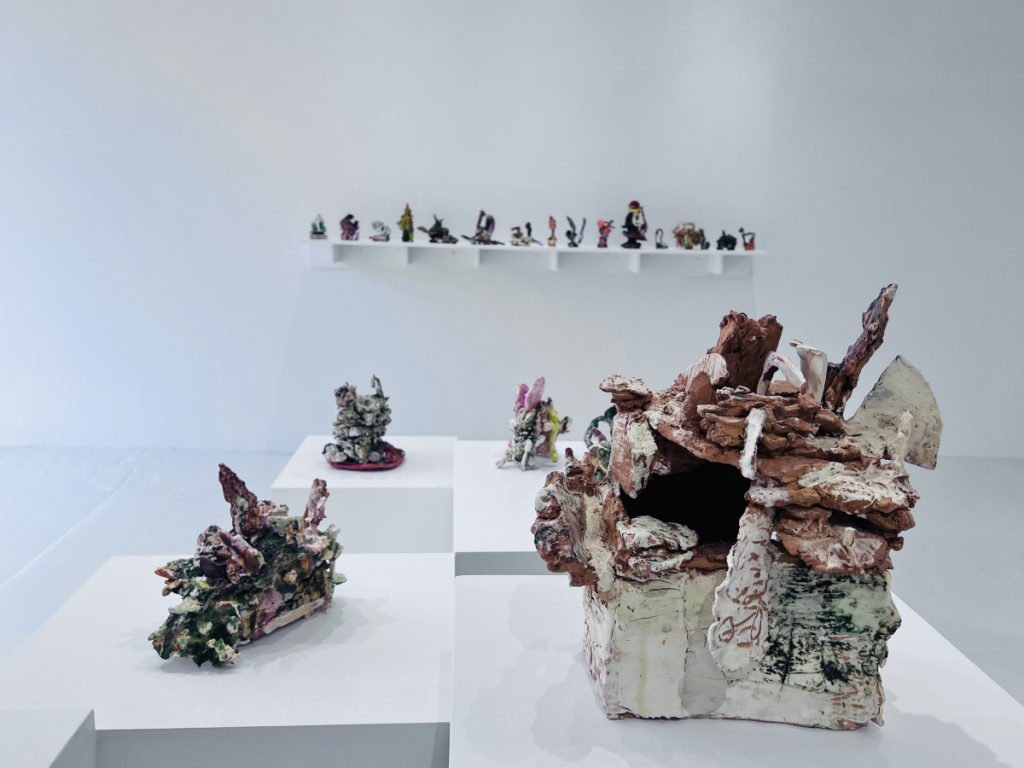
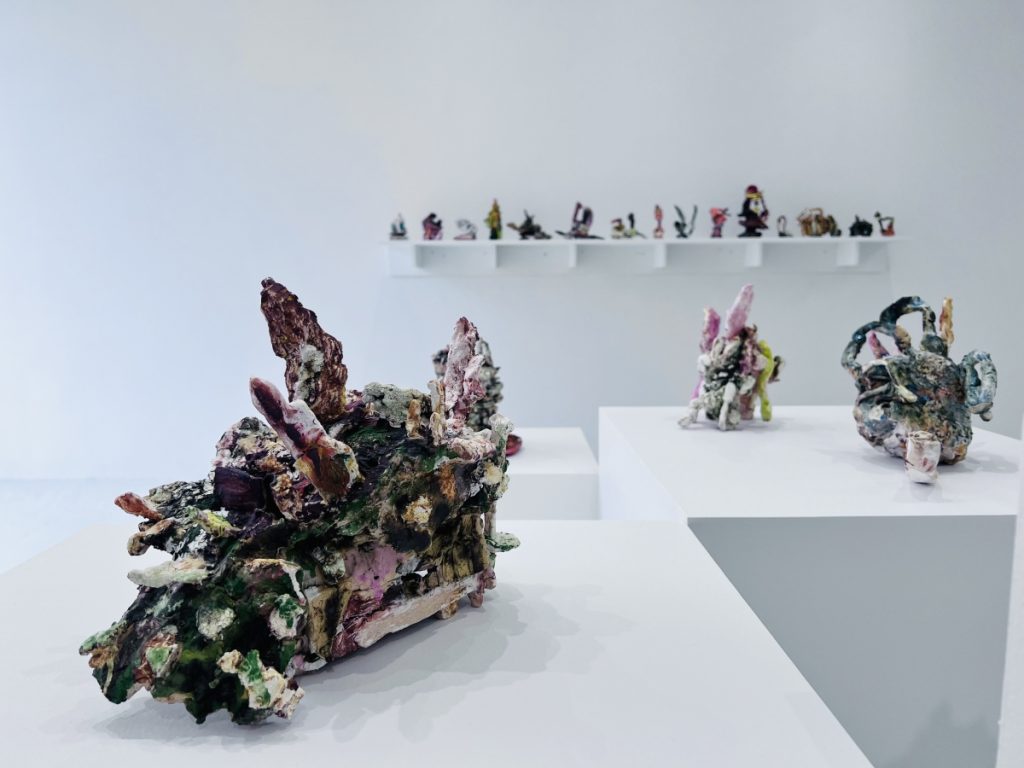
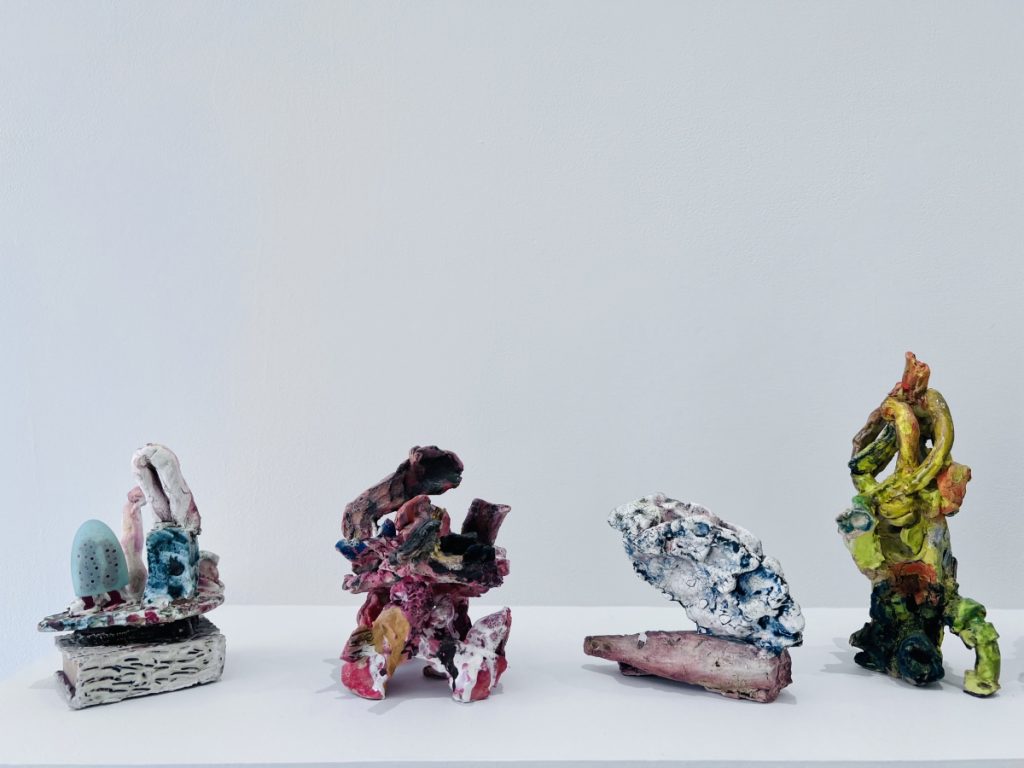
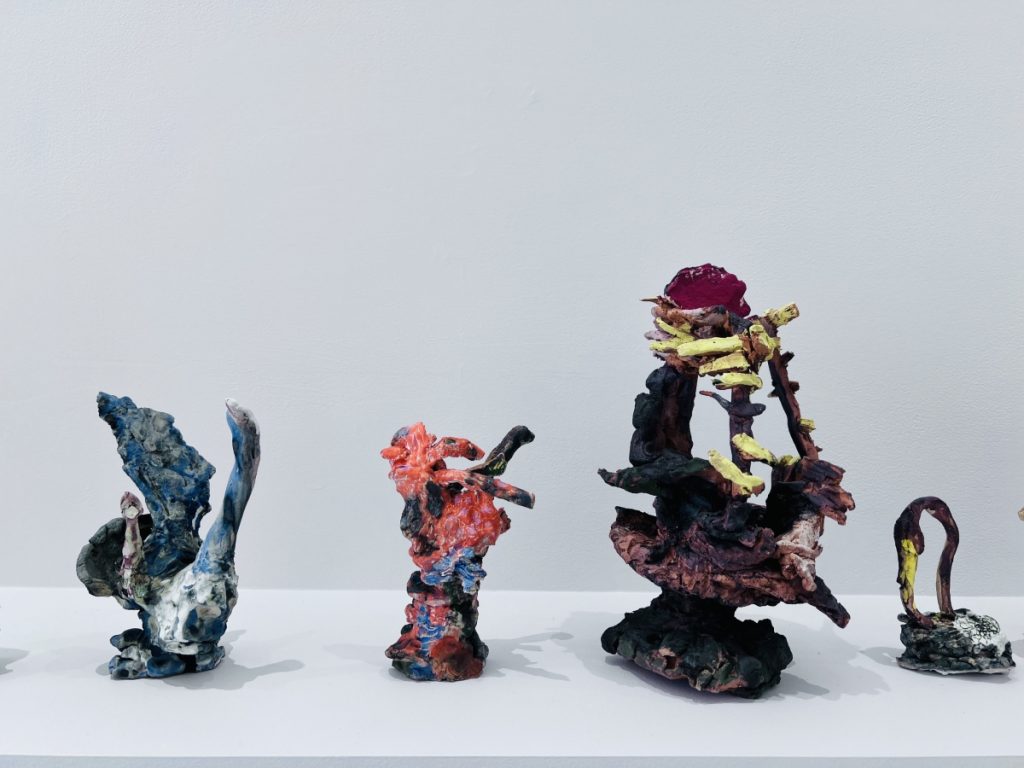
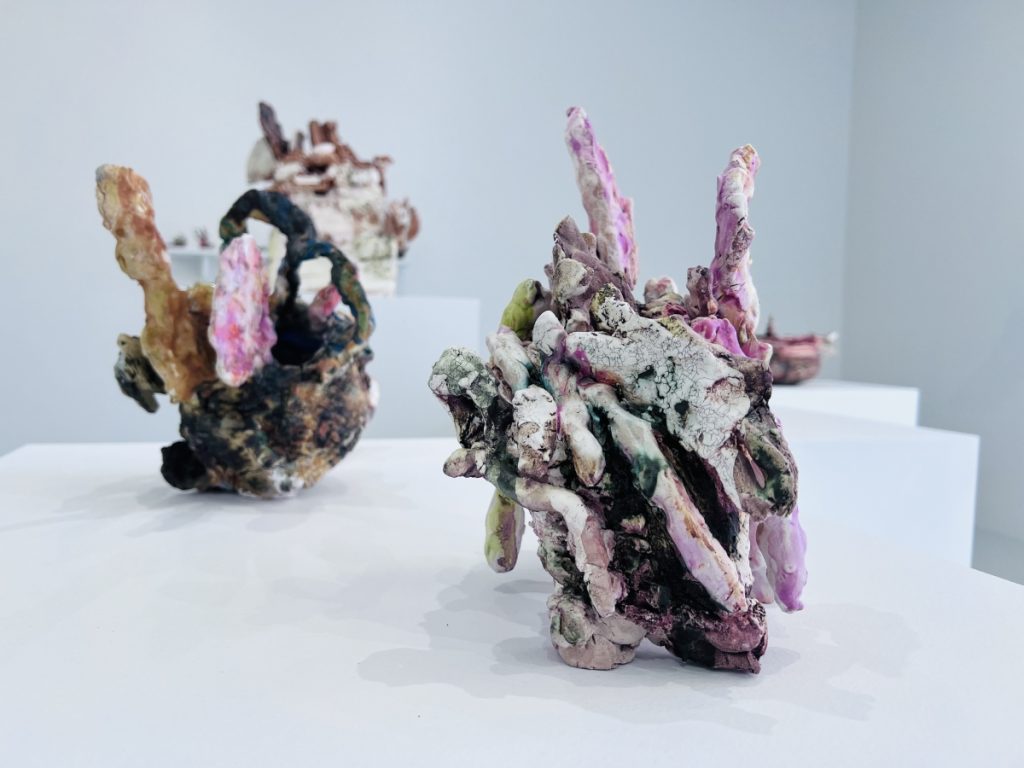
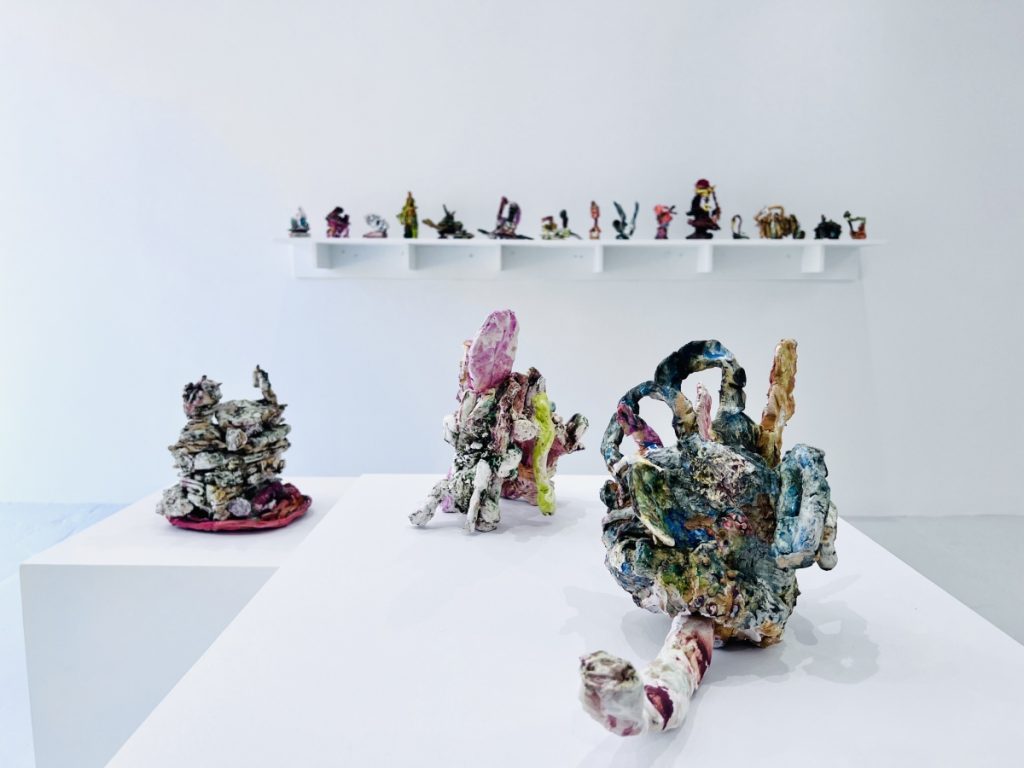
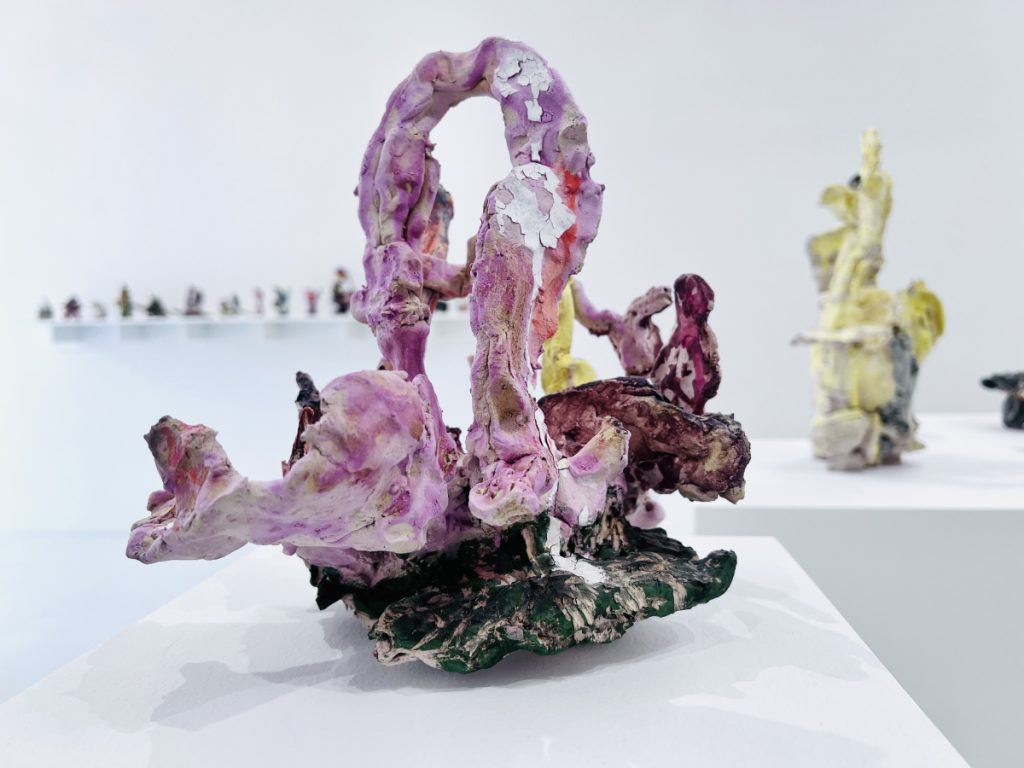
Judy Hoffman: Evolvers and Wildtypes is on view at Sculpture Space NYC, New York
April 5 – May 4, 2024
Sculpture Space NYC is pleased to present Judy Hoffman’s “Evolvers and Wildtypes”. In her first solo exhibition of ceramic sculpture Judy Hoffman will present over 30 works ranging in size from 4 to 20 inches high. Hoffman explores themes of regeneration, decay, and birth. Her colorfully complex hybrids present fantastical structures that are simultaneously landscape, human figuration, and industrial artifacts.
Hoffman has exhibited her ceramic sculpture and site specific installations in New York City venues including Wave Hill, Lesley Heller Gallery, Sculpture Space NYC, Jane Hartsook Gallery, BRIC, Ceres, Nutureart, Proteus Gowanus, Kentler International Drawing Center and Shirley Project Space; Rutgers and Jersey City Universities, New Jersey; Mary Grove College, Detroit; University of North Texas; and the Bienalle Bonn/ Frauen Museum and Kunstler Forum in Bonn, Germany.
Judy Hoffman’s artist books are in public collections including the Brooklyn Museum Library, Sackner Archive of Concrete and Visual Poetry, Rhode Island School of Design and Yale University Art Gallery. Hoffman is a winner of the 2016 New York Studio School Art Critical Alumni Award, a recipient of a 2017 fellowship at Greenwich House Pottery and an anniversary artist grant from Women’s Studio Workshop, and has been featured in the journal Hand Papermaking. Her art has been recognized by critics from the New York Times, the Village Voice, Hyperallergic, the Washington Post and Sculpture Magazine. She is a graduate of Grinnell College and studied at the New York Studio School of Drawing, Painting and Sculpture.
Essay by Kay Whitney
This exhibition presents a rowdy group of ceramic objects that barely contain their freight of allusive color and emotive power; each sculpture occupies space as a dazzling constellation of parts. Judy Hoffman’s imagery blends biomorphic forms with furniture, architecture and everyday objects – these chimerical mixtures create little hybrids that are playful, complex, poetic and hard to categorize. They result from a deeply considered process grounded in the great aesthetic intangibles of intuition and spontaneity. Many things happen simultaneously in each piece she creates; her work assimilates the uncontrollable through lavishing meticulous care on the manageable. Full of mysterious incoherencies and haphazard passages, her work is ultimately striking and beautiful. The many angles and connections that constitute each individual object are orchestrated within a whole that is challenging, active, expressionist and balletic.
The unseen labor of her process is keenly present; the viewer senses choices made and rejected, parts restaged or remade. Her approach is both experimental and intensely considered, it’s results are deeply engaging and energetic. Working on numerous pieces simultaneously, she develops each work through an evolving process using change and alteration as a source of discovery. During these stages of invention she accepts or rejects a multiplicity of potential choices; what survives the process often becomes a major characteristic of each developing piece. The freshness and animation of her work resides not only in its coloration but also in its vivid and extensive vocabulary of gestures. Her 2022 piece “Landed” is an encyclopedic record of Hoffman’s multiple touches – of crimps and compressions, thick slabs and stacked layers, pinched fan shapes and airy horizontals. Each sculpture contains a wide variety of binary qualities and categories; hard/soft, organic/geometric, balanced/imbalanced, formal versus anti-form, generation/disintegration. This range of characteristics is especially appropriate for a body of work focused on all the possible ways an object can interact with space.
The French philosopher, Gaston Bachelard, coined the term “intimate immensity” – a phrase that is particularly apt as a descriptor of the scale of Hoffman’s work. Few of her pieces are taller, longer or wider than 20″ yet they are not defined by their relatively small scale. In many of them the empty, open areas are as important as the physically occupied ones; the work is defined by absence and presence. The most surprising aspect of each piece is how formidable it is despite its small size. Work at this dimension invites its viewer to look closely, to be drawn into the details – they invite an intimate glance. “Standing, Blue and Orange” is not quite 10″ in height yet it both compresses and amplifies the energy of her gestures; its expressive coloration, detailed surfaces, unexpected projections and deep cavities seem to heat the air around it.
Color plays an essential role in Hoffman’s work, not simply as a way to produce surface effects but as a way to underscore the forms she uses and emotions she conveys. In her work, color, form and surface are intimately combined. Although she does use some glazes , she mainly uses highly pigmented clay-based stains and oxides that saturate the skin of her forms becoming part of them. The coloration mirrors her gestures – like an expressionist painter she makes mark on mark on mark on a continuously altered ceramic ‘canvas’. Her work extends the gestural vocabulary of action painting into the concrete language of sculpture. “Pinker” seems almost psychedelic in the range of colors it employs – its pinks, salmons and yellows flicker almost luridly across its surfaces, seemingly inflating each projecting section beyond its actual scale.
The most defining aspect of her work is its emotional range; through her use of color, she infuses her work with references to a variety of states – from the lighthearted to the deeply introspective. Within these emotional registers she often injects notes of existential absurdity into the vocabulary of her structures. These profound characteristics lie at the heart of Hoffman’s enterprise – they are the psychic underpinnings making her work both moving and intimate. Her ability to organize, disorganize and reorganize space is animated by the emotional intensity injected into each form. Her working methods mix the deeply serious with the absurd – a strategy that makes her work approachable, inviting, distinctive and memorable.
Contact
info@sculpturespacenyc.com
Sculpture Space NYC – Center for Ceramic Arts
47-21 35th Street
Long Island City, NY 11101
United States



